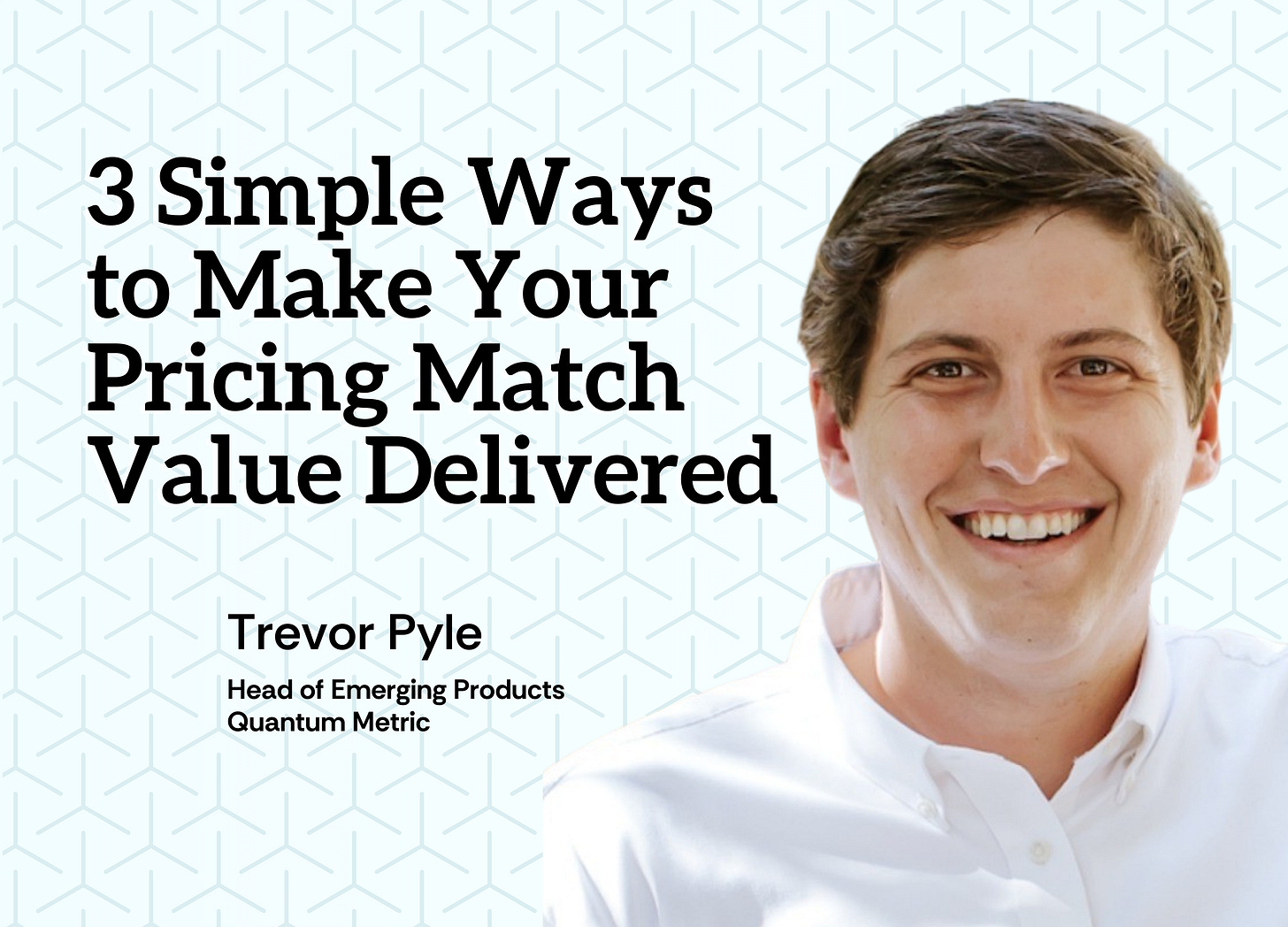by LIZ CHRISTO
DEAR STAGE 2: We’re seeing strong signals of enterprise traction, but we’re concerned that our pricing model is slowing down deals. We charge based on contact volume—but that doesn’t always reflect the actual value we deliver. How should we approach evolving our process to serve these larger customers? ~MISALIGNED

DEAR MISALIGNED: Enterprise deals often test early pricing and enterprise buyers bring a new level of scrutiny—especially when pricing doesn’t match perceived value. If your model is based on inputs like contact volume or user count, it’s a tough sell when your buyer can’t easily tie those numbers back to business impact.
You might be building pipeline faster and closing big(ger) deals, but still running into objections. Why? Because your pricing doesn’t tell the same story your outcomes do.
Trevor Pyle is the Head of Emerging Products at Quantum Metric, a Stage 2 LP and experienced product marketing leader ready to tackle this Q. His advice? If you want buyers to say yes with confidence, you need to define your specific unit of value and price against it. In an ideal world, your unit of value is something measurable, scalable, aligned to customer value, and is what your customers actually pay for.
1. Volume ≠ Value
In the mar-tech world, contact-based pricing is common. It’s easy to meter, predict, and model. But it’s also misleading at times.
Trevor put it bluntly: “You’re delivering value based on the opportunity volume and acceleration you’re driving—not the number of names in a database. So why price it that way?”
In practice, contact-based pricing often creates friction:
- Buyers don’t always know how many contacts they have or the number is misleading (E.G. dirty data, hard to control volume etc)
- Usage doesn’t scale with results, so price doesn’t feel “fair.”
- You get stuck in long procurement cycles over inputs instead of outcomes.
In a prior life I lived this during a contract negotiation. We were long-time HubSpot users and found ourselves exporting contacts and inactivating them in our CRM to stay under a volume threshold that didn’t match the value we were deriving. If we were emailing these users regularly I could make the argument, but truly this was database storage. Easy to see how what could be a value-aligned pricing metric fell flat.
2. Introduce Value Bands
One of Trevor’s most actionable suggestions was to introduce value bands, pricing tiers tied to the average opportunity size or sales motion the customer is running.
It’s a subtle shift that makes a big difference:
- A sales-led org closing $500K deals doesn’t blink at $100K software—especially if it’s accelerating close rates.
- But a marketing team with 100,000 contacts and a $20K budget? They’ll question every line item.
- By pricing according to opportunity size, you are aligning your pricing with customer outcomes, which is the basis for a compelling ROI discussion.
This approach also helps you tailor packaging and messaging by customer type/segment, without needing to reinvent the product.
3. Price for the Buyer, Not Just the User
Instead of just segmenting by usage, Trevor advises that you should segment by WHO the economic buyer is and WHAT they actually care about.
- If your platform is used by customer marketing but paid for by sales or the CRO, the pricing should reflect sales metrics (not marketing ones).
- If your product helps close six-figure deals, the pricing should look like it belongs in a six-figure stack.
Said another way: pricing and packaging is messaging. When you anchor it in value, it becomes easier to justify, internally and externally.
One final reminder: keep it simple. Pricing needs to feel fair and scalable. That doesn’t mean you need a dozen SKUs or custom quotes. It means building a structure that tells a consistent story of value, aligned with how your best customers grow.
So if you’re feeling stuck between a “good enough” model and a high-friction enterprise motion, this might be your moment to rethink your pricing strategy.
Until next week!

Leave a Reply